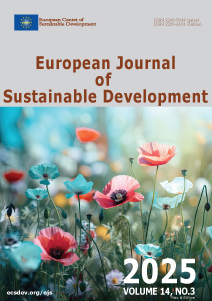Converging Technologies in Neuromarketing: Analysis of Trends and Ethics
Keywords:
Artificial intelligence, bibliometric analysis, consumer behavior, emerging technologies, marketing innovation, neuromarketingAbstract
The convergence of neuroscience, technology, and marketing has given rise to neuromarketing, a field that leverages advanced neuroimaging techniques and artificial intelligence to analyze consumer behavior. The study aims to investigate the development, the uses, and the ethical problems of converging technologies in neuromarketing, emphasizing the tension between scientific progress and the regulatory frame. The trends were developed through a bibliometric analysis of Scopus-indexed literature for 2015-2024, focusing on keyword clustering, co-occurrence networks, and geographical distribution mapping. Five major thematic clusters were discovered as follows: (1) applications in neuromarketing, (2) neuroscientific methods, (3) data analytics and predictive modeling, (4) ethical and regulatory challenges, and (5) theoretical foundations. The United States leads scientific production, while Europe and emergent economies are behind, confirming that a global interest is aroused by the technological progress made by neuromarketing. Such that, machine learning-enabled Electroencephalograph (EEG) and Artificial Intelligence (AI) horizons have conferred on us advanced capacities for prediction; however, grave concerns over consumer privacy, manipulation, and ethical accountability exist in the ether still. The study highlights the need for concerted interactions across fields to ensure that regulatory frameworks come to the fore that assimilate some balance between technological development and ethical integrity for future neuromarketing requirements in a much more responsible manner.
Keywords: Artificial intelligence, bibliometric analysis, consumer behavior, emerging technologies, marketing innovation, neuromarketing.
Downloads
Published
How to Cite
Issue
Section
License

This work is licensed under a Creative Commons Attribution-NonCommercial 4.0 International License.





